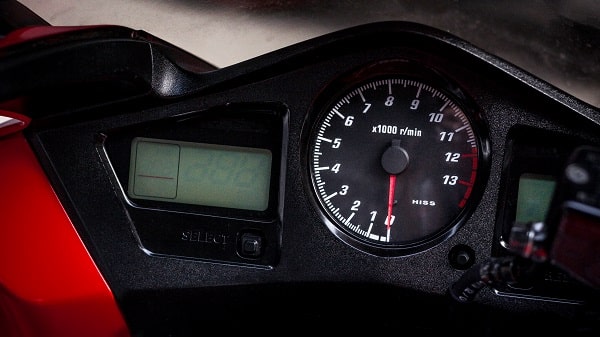When riding a motorcycle, you often find yourself driving at one speed while on the highway. But, when you need to change gears for tight corners or during traffic jams, it can be tricky to figure out which one to use.
So, this article will cover everything you need to know about when to shift gears on a motorcycle and the ideal RPM to do that.
So, Exactly When Should I Shift Gears?
For bikes 500cc and up, the standard RPM to shift is between 5000 to 8000.
For 250cc bikes, keep your RPM at a steady 2,000 for a smooth riding experience.
For all other situations, a simple rule applies. You should shift gears when your engine RPM drops below 3000 or when it exceeds 6000.
Advantages of Shifting Gears at The Right RPM
There are three main benefits to shifting gears at the right RPM.
#1 Smoother Ride
Shifting gears at the right moment won’t stall your motorcycle and will smoothly change the gears to the next level. You won’t have to slow down, and you might not even feel the brief pause of the gears switching as you ride.
#2 Increase Fuel Economy
Since the ride is much smoother and your motorcycle won’t have to decelerate, you’ll also increase your bike’s fuel economy. You won’t have to worry about jerking back and forth while shifting gears if you can pin this technique down.
#3 Engine Lasts Longer
Shifting at the right time reduces friction in all areas of your motorcycle. Everything moves and shifts smoother, including the mechanical parts responsible for hauling your ass across the intersection. This will reduce the stress on your engine and the parts around it.
What Is Motorcycle RPM?
RPM stands for Revolutions Per Minute. This is the rotational speed of the crankshaft traveling through the gearbox to power the rear wheels. The crankshaft is the major component of the engine that converts linear piston motion into rotary motion.
The crankshaft pistons are attached to the piston rods. As the crankshaft moves, each piston lifter rises and falls. It also works directly with the engine and speed, so the higher the RPM, the faster you will go. However, with powerful engines, higher RPM leads to higher fuel consumption since the pistons rotate at a faster speed.
Should You Follow A Tachometer?

Beginners can use a tachometer to determine the ideal RPMs. This gets rid of the guessing involved in knowing when to shift your gears. However, keep in mind that as you get used to either shifting with the tachometer or by riding on your bike for a while, you’ll be able to shift smoothly on your own.
This is because there’s a distinct sound and vibration from your motorcycle’s engine when it’s ready to shift. When you consider that keeping your eyes on the road at all times is important for your safety, looking down at a tachometer frequently isn’t the safest thing you can do while riding.
Nevertheless, there are some advantages to following a tachometer and they include:
- Guidance on when to shift gears for beginners
- Detailed measurement of your engine and transmission
- Shows when you’re past the safe range of RPMs
What RPM To Shift Gears At?
Shifting gears depends on your bike’s engine capacity and how fast you want to accelerate.
If you want to speed up on a highway, shift gears just before the redline on your tachometer.
If you’re commuting on a city road, change gears at around 3000 to 4000 RPM for better mileage and engine life.
Right RPM To Shift For Fuel Efficiency
Lower RPM leads to higher fuel economy and less gas consumption. But, you can’t go lower on high gears and high on low gears for fuel economy, as it adversely affects the riding experience and engine life. So, shift gears at the sweet spot with little to no vibration and with a balanced throttle response.
In the same way, when you reach the optimal speed, maintain a comfortable RPM range that is low enough for your bike to burn less gas.
Right Time To Up-Shift To Go Fast
To go fast, you need to keep an eye on the throttle and feel of the bike. Once the bike starts vibrating and the pitch starts to increase, you should shift to the next gear.
Shifting gears depends on the bike’s CC and road conditions. Generally, the best RPM for top speed is between 5,000 to 7,000.
If you shift up or down too soon, you’ll hear your engine struggling to maintain a balanced state.
Right Rpm To Shift When Riding On Steep Climbs
For smooth riding on steep climbs, you’ll need to maintain a steady RPM at 5,000. If you attempt to accelerate on steep climbs when your bike is below 2,000 RPM, you risk damaging your engine and putting extra load on the rear wheel.